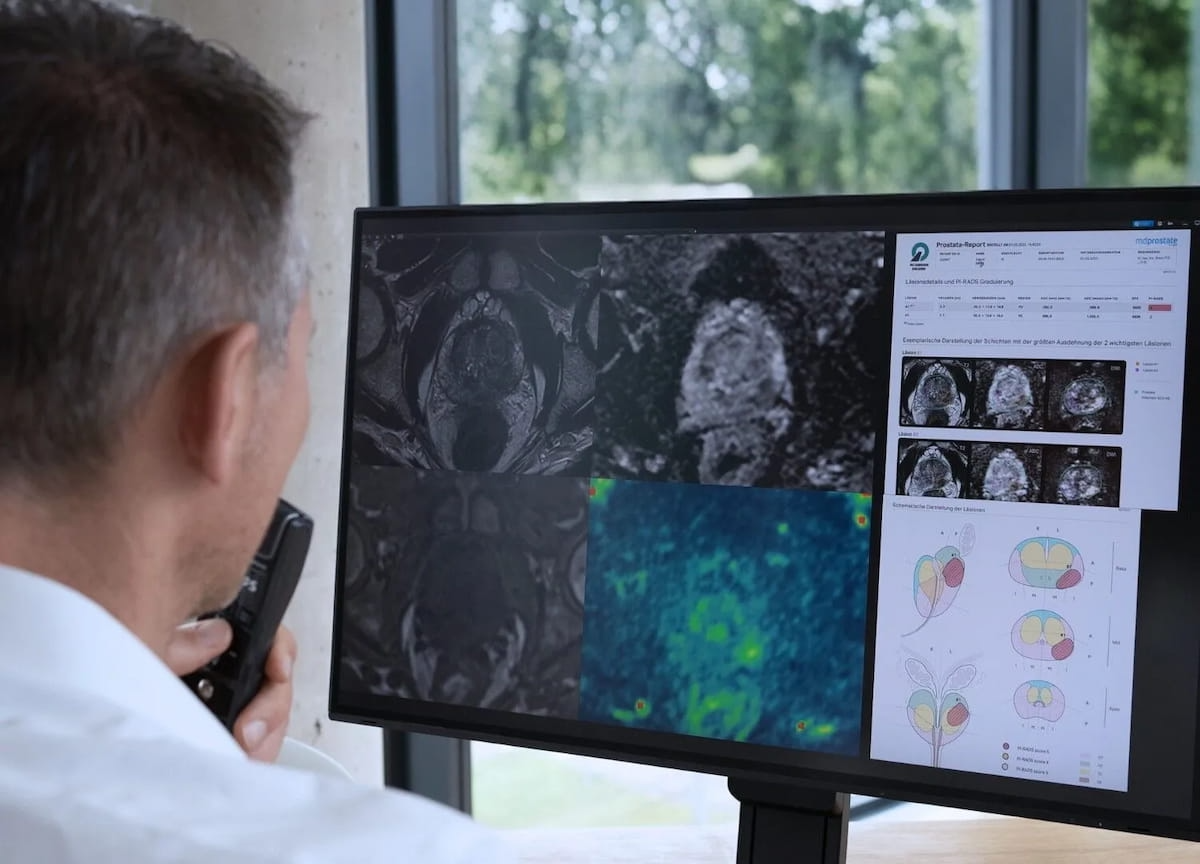Emerging research suggests an artificial intelligence (AI) platform may improve prostate cancer (PCa) detection on multiparametric magnetic resonance imaging (mpMRI).
In a retrospective study, recently published in the European Journal of Radiology, researchers evaluated the AI-enabled mdprostate software (Mediaire) in 123 men (mean age of 66.8 years) who had mpMRI and subsequent biopsies. Fifty-five men in the cohort had clinically significant prostate cancer (csPCa), 53 participants had no PCa and 15 patients had non-significant PCa, according to the study.
The researchers found that the AI software had a 100 percent sensitivity rate and a 100 percent negative predictive value at a cutoff of PI-RADS > 2 for csPCa and non-significant PCa.
“In a clinical workflow, this could potentially reduce the number of unnecessary biopsies, thereby minimizing patient discomfort, reducing healthcare costs, and allowing for more focused attention on cases with higher suspicion of malignancy,” wrote lead study author Nadine Bayerl, M.D., who is affiliated with the Institute of Radiology at the University Hospital Erlangen in Erlangen, Germany, and colleagues.
Noting low specificity at the PI-RADS > 2 threshold (7.5 percent for PCa with a Gleason score > 6), the study authors also examined the capability of the AI software at higher PI-RADS cutoffs. Employing a PI-RADS > 3 cutoff, the researchers noted an 85.5 percent sensitivity and 60.3 percent specificity for the mdprostate software for diagnosing csPCa. The study authors found similar sensitivity (85.5 percent) and specificity (63.2 percent) for the PI-RADS > 4 threshold.
Three Key Takeaways
- Increased sensitivity and NPV for clinically significant PCa. The AI-enabled mdprostate software demonstrated a 100 percent sensitivity and negative predictive value (NPV) at a PI-RADS > 2 threshold for detecting clinically significant prostate cancer (csPCa), suggesting a robust tool for minimizing missed csPCa cases.
- Potential to reduce unnecessary biopsies. By achieving high sensitivity at lower PI-RADS thresholds, the software could help reduce unnecessary biopsies, which in turn would lower patient discomfort and health-care costs, while enabling radiologists to focus more on more complex and higher-risk cases.
- Improved consistency in MRI interpretation. The mdprostate AI tool may help reduce intra- and interreader variability in prostate MRI interpretations by ensuring consistent application of PI-RADS scoring, which can enhance reproducibility and reliability in prostate cancer assessments.
“One of the primary advantages of AI tools like mdprostate is their `potential to reduce intra- and interreader variability in prostate MRI interpretation. The automated nature of the mdprostate algorithm ensures consistent application of PI–RADS scoring criteria, enhancing the reproducibility of prostate MRI evaluations,” emphasized Bayerl and colleagues.
The researchers also pointed out that while the AI software offered 8.5 to 10.5 percent lower sensitivity rates than PI-RADS > 3 assessments reported in two meta-analyses, the specificity rate for those assessments with the mdprostate software ranged between 4.3 to 17.3 percent higher (60.3 percent vs. 56 percent and 43 percent).1-3
(Editor’s note: For related content, see “MRI Study Suggests Deep Learning Model Offers Equivalent Detection of csPCa as Experienced Radiologists,” “PSMA PET/CT or mpMRI: Which is Better for Diagnosing Biochemical Recurrence of PCa?” and “How Effective is mpMRI at Detecting PCa in Biopsy-Naïve Patients?”)
Beyond the inherent limitations of a retrospective study, the authors acknowledged the small cohort size and the lack of direct comparison of the AI software to radiologist interpretation with the PI-RADS 2.1 classification system. They also conceded a lack of differentiation between zonal locations of the prostate lesions.
References
1. Bayerl N, Adams LC, Cavallaro A, et al. Assessment of a fully-automated diagnostic AI software in prostate MRI: clinical evaluation and histopathological correlation. Eur J Radiol. Available at: https://www.ejradiology.com/article/S0720-048X(24)00506-0/fulltext . Published October 14, 2024. Accessed October 16, 2024.
2. Park KJ, Choi SH, Hyun KM, Kim JK, Jeong IG. Performance of Prostate Imaging Reporting and Data System, version 2.1 for diagnosis of prostate cancer: a systematic review and meta-analysis. J Mag Reson Imag. 2021;54;103-112.
3. Oerther B, Nedelcu A, Engel H. Update on PI-RADS version 2.1 diagnostic performance benchmarks for prostate MRI: systematic review and meta-analysis. Radiology. 2024;312:e233337.
